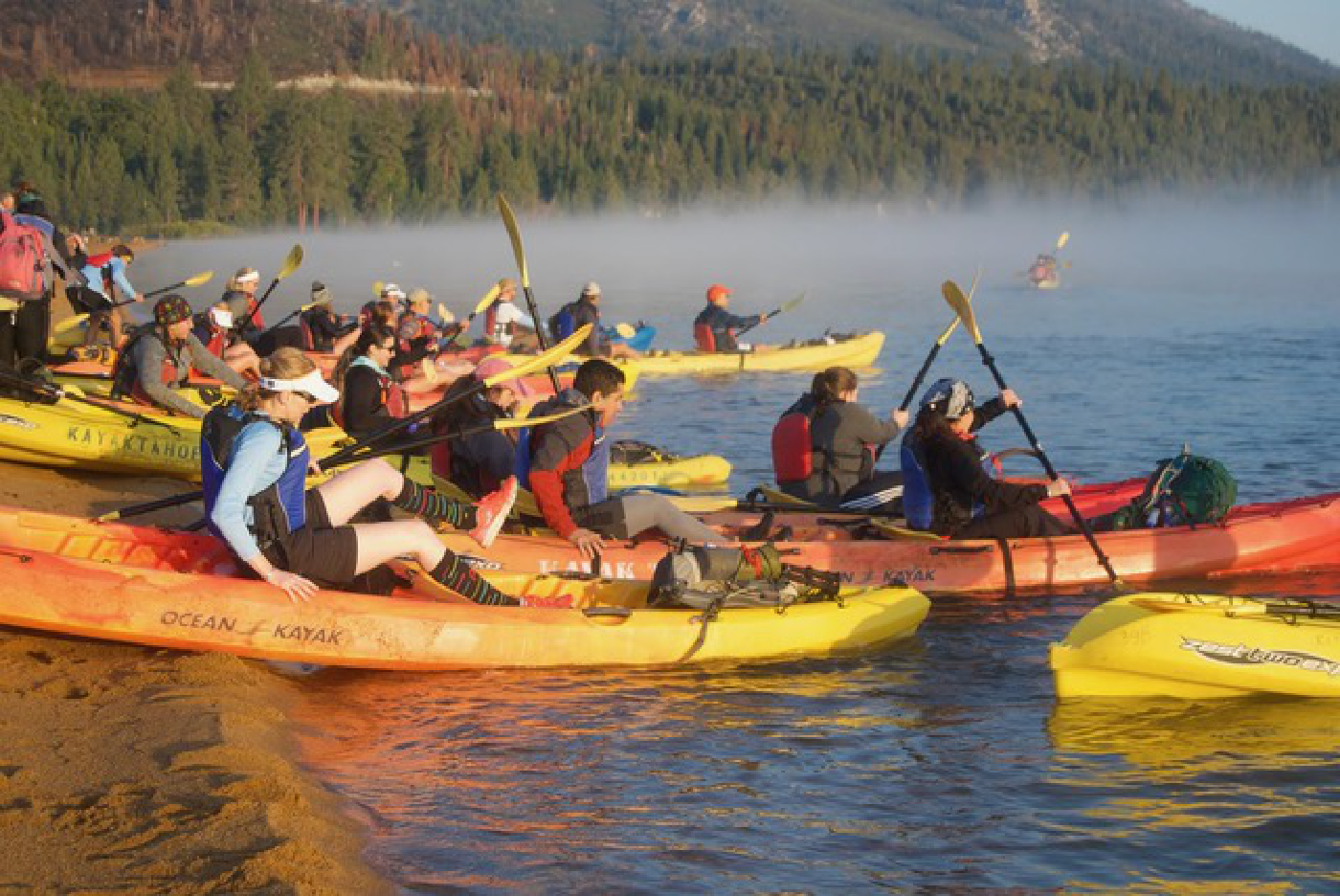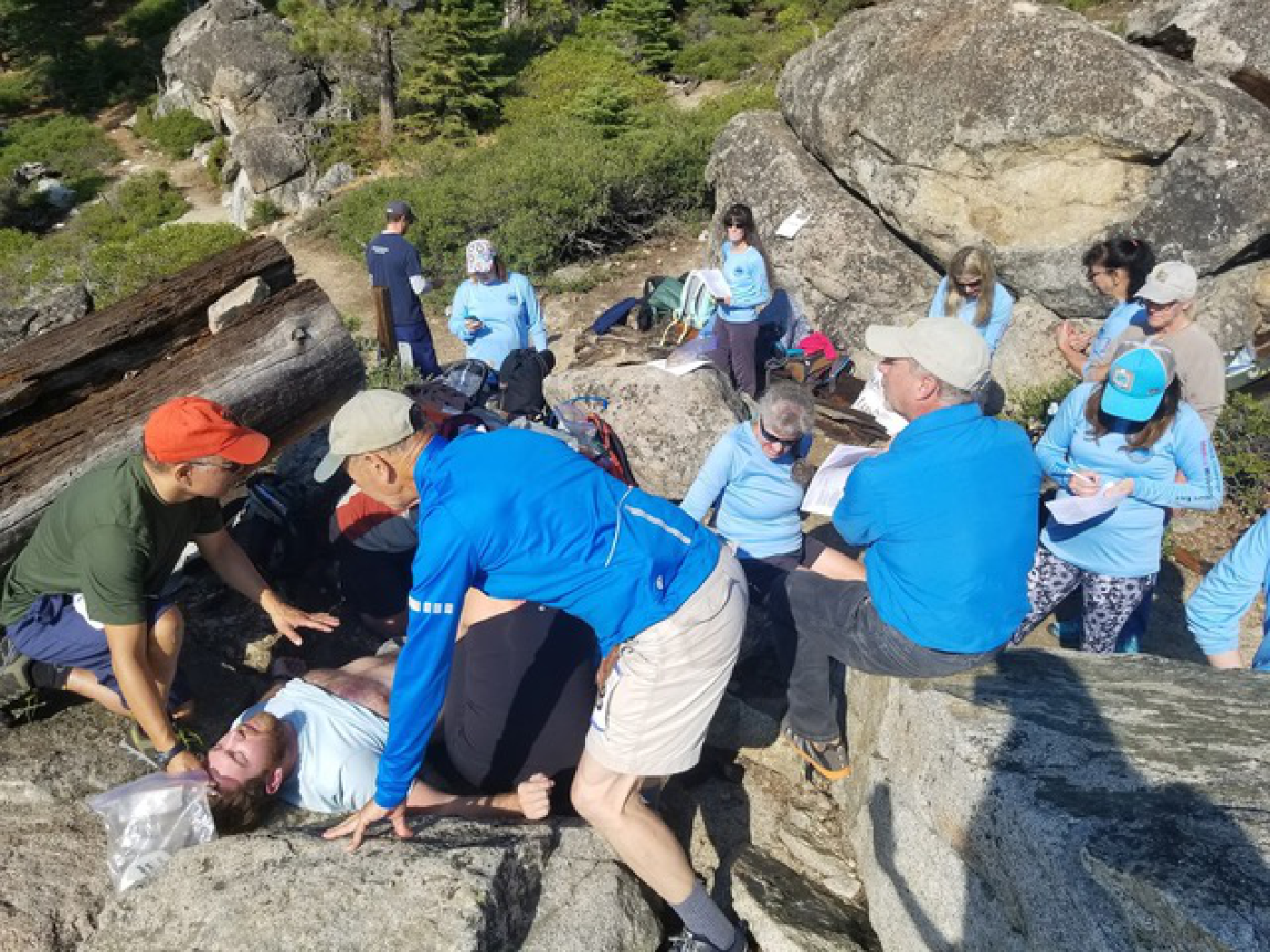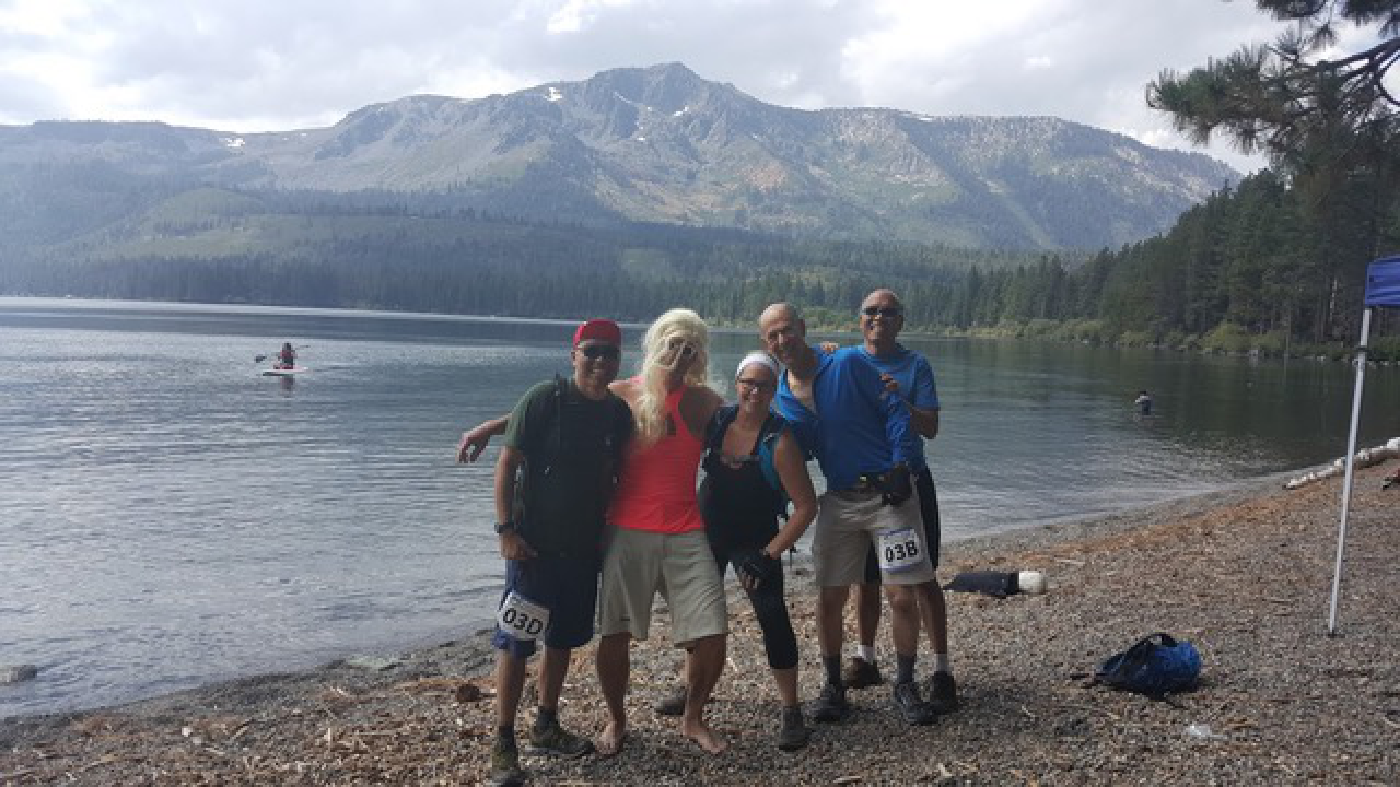Jeff Amen participated in the inaugural Medwar Lake Tahoe event in 2016. Here is his story.
We arrived at Baldwin Beach, South Lake Tahoe at 6:30 AM. We were late for a planned 6:00 AM arrival at the starting line, having been slow to get packed up and leave the campsite at Fallen Leaf Lake. Hurriedly, we set up our transition area, placing our bikes and extra water, and making last minute checks of our packs and decisions on clothing layers. Now, 12 teams of four stood on the beach receiving last minute instructions and awaiting the 7 AM start.
Medwar stands for Medical Wilderness Adventure Race. It combines the challenges of a typical adventure race: running or hiking, mountain biking, kayaking, and orienteering, along with medical scenarios interspersed throughout the course. I had new teammates for this year’s race: my brother, Rodney, and my longtime friend Richard joined the team. Both are longtime endurance athletes and have a strong biking background, although neither had done an adventure race before, nor had much medical background. The fourth member, Julie, is an OR nurse at the hospital I work at, and has a strong athletic background. Richard, being over 70 years old, insured that we would be the oldest team competing.

At the start, the teams ran a short distance on the beach to the kayaks and started the first leg of the race – approximately 2.5 miles of kayaking on Lake Tahoe. Last year we kayaked on placid Fallen Leaf Lake. Now we were on a much larger body of water with more current, wind, and waves. After about an hour of paddling, we landed at a point just north of Emerald Bay. We were in 10th place.
At the landing point, the first medical scenario awaited us. It was a case of a hung-over diabetic with altitude sickness. We had to workup the patient, call for helicopter evacuation, and carry the patient a short way to a landing area. Each member would randomly take turns as team leader for each scenario. The medical scenarios are intended to be a learning experience for medical and non-medical personnel.
Now we started a five-mile hike along the coast of Lake Tahoe. The terrain was relatively flat and the trail was well worn. Most of the other teams ahead of us were running the trail. Our team was not prepared to run, so Julie and I took turns setting a fast walking pace.
At the turnaround point, the second scenario was an ATV accident with two victims. The first had an arterial bleed in her left arm requiring a tourniquet to be placed. The second had a compound fracture of a femur and a pneumothorax. The team functioned well as a group during the scenario. As we started back for the boats, the last place team was approaching the scenario.

On the way back, Julie and I pushed the pace, and we were able to catch the 10th place team. They were young medical professionals from Arizona. We would be traveling neck and neck with this team for most of the race. As we approached the boats, I could see four sets of kayaks still there. One team was shoving off as we finished the hike. We shoved off our boats at the same time as the Arizona team.
I could see the 9th place team ahead of us on the water. They were too far ahead to catch them but they were within sight the entire way back. Knowing the Arizona team was right behind us, we wanted to paddle hard on the way back. I sat in the front position of the kayak, and left the steering to Rodney in the rear position. Wind and waves had increased since earlier this morning; there were more boats on the water as well. As we reached Baldwin Beach, I finally had a chance to look back and saw the Arizona team far behind.
The third scenario was a simulated avalanche rescue. We had to use transceivers to locate the victim, uncover him, and workup any medical problems, which turned out to be a spinal injury. We ate a quick lunch and prepared for biking. We were about four hours into the race. The second half was virtually all mountain biking. We now were in 9th place.
The initial part of the biking was flat, single track leading up to the shores of Fallen Leaf Lake. There we found the fourth medical scenario, a water rescue of a drowning victim. Julie and Rodney swam out to the victim and brought him in while initiating rescue breathing. On the beach, we completed with a full CPR scenario. Now we started out on our bikes on the approach to Tahoe Mountain, which would climb from an elevation of about 6,000 feet to over 7,200 feet.
First we had to overcome some directional challenges. We misread the map and overshot the turnoff trail, as did three other teams. There were now four teams bunched together, occupying 8th through 11th place. After backtracking, I finally figured out the correct trail and directed everybody to that point.
We were in 8th place as we approached the base of Tahoe Mountain. We slowly started climbing. The rocky trail was single track with switchbacks along one side. Rodney, our strongest rider took the lead followed by Julie, Richard, and me. I rode most of the way, although I had to walk several portions. It was a maximum effort taking over one hour to get to the top.
Finally we reached the top of Tahoe Mountain and the teams behind us were nowhere in sight. As slow as we had climbed, we had still been able to distance ourselves from them. We had seen at least five teams ahead of us on their descent during our climb. As we reached the top, the 7th place team was just starting their descent. Two scenarios awaited us at the top. The first was a lightning strike with three victims with varying degrees of injuries. The second scenario was an orienteering challenge. Both Rodney and I were well acquainted with using a compass, and we worked together with good synchronicity. Now we had a long ride down the mountain. We descended slowly in the interest of safety but this also allowed us to enjoy a spectacular view of Lake Tahoe.
At the base of the mountain, we only had a couple of miles of gentle, mostly downhill riding. We had two more checkpoints, which initially looked fairly easy to find. But we missed one and again had to backtrack, having to grind it back uphill.

The finish at Baldwin Beach was almost anticlimactic. We finished in 8th place, just under ten hours on the course. We were a few hours behind the winning team and had missed the awards ceremony, but we were all smiles at the finish line. There were still many volunteers and competitors remaining to cheer us, and plenty of beer and pizza for a post race meal. Officially, Richard is the oldest person to complete the race. This event combines many things I love doing. I'm already making notes and planning for next year.